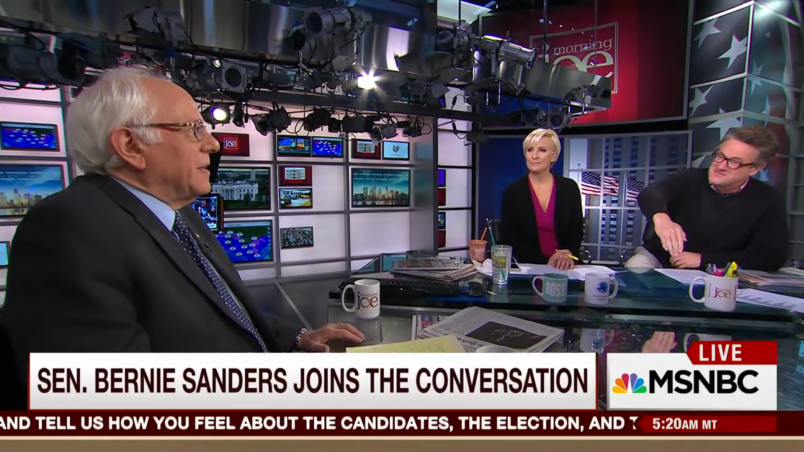Sen. Bernie Sanders (I-VT) got a second chance to explain how he would implement his economic policy during a Friday morning appearance on MSNBC’s “Morning Joe.”
Sanders’ interview with the New York Daily News editorial board, which was published Monday, covered Wall Street reform, gun ownership and Middle East policy. But reactions to the interview largely focused on Sanders’ comments on breaking up the big banks.
“Some answers they felt you came up short with, especially on your main message. So I’ll re-ask those questions,” host Mika Brzezinski said to Sanders. “I’m literally taking the Daily News interview and borrowing from this great interview. By what authority and how would you go about breaking up the largest financial institutions in the country?”
“You ready for the answers?” Sanders joked to Brzezinski.
“You can do it in a couple of ways. One way is you can use Section 121 of the Dodd-Frank legislation,” he elaborated. “And number two—better, and I would prefer—is pass by legislation. What my legislation and the legislation that I’ve introduced says that the secretary of the treasury will have the authority to investigate and determine which banks pose systemic risks to our economy. I.e., if they’re too big to fail, they can bring down a significant part of the economy and within a period of time, the secretary can break them up.”
Brzezinski also asked Sanders to explain what a large financial institution like JPMorgan Chase or Citibank would look like in the second year of his presidency.
“What I said is after they’re broken up that is their decision to reconfigure how they want to do it,” Sanders said. “It’s not the government’s business. We tell you you can’t be this big, you’re too much of a danger. Go from there, this is how big you can be. I won’t run JPMorgan.”
Watch below via MSNBC:



